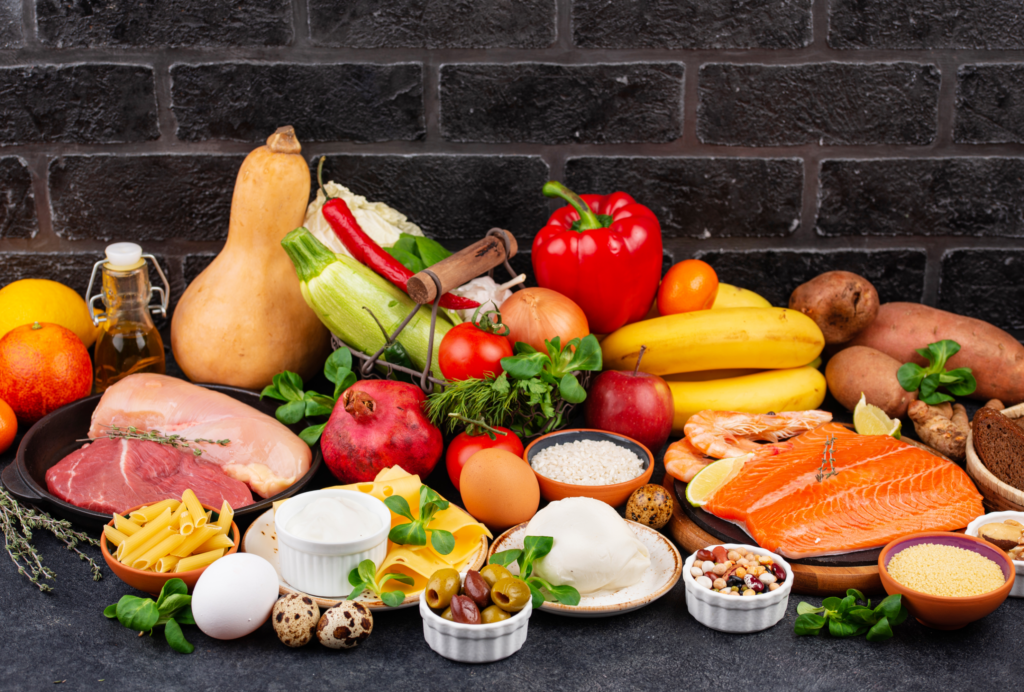
When it comes to selecting cooking oils, the choices can be overwhelming. Two popular contenders in the kitchen are canola oil and extra virgin olive oil (EVOO).
These oils each have distinct flavors, nutritional profiles, and ideal uses, making the decision between them a matter of personal taste and culinary expertise.
What is canola oil?
Canola oil is a popular cooking oil that’s derived from the seeds of the canola plant, a type of rapeseed.
The name “canola” actually comes from “Canadian oil, low acid,” highlighting its Canadian origins and the fact that it’s made from a variety of rapeseed specially bred to have low erucic acid content.
Canola oil is known for its mild flavor and high smoke point, making it versatile in the kitchen. The smoke point is the temperature at which an oil begins to smoke and break down, and canola oil’s relatively high smoke point makes it suitable for most cooking methods, including frying and sautéing.

Nutrition-wise, canola oil is low in saturated fat and contains a good balance of polyunsaturated and monounsaturated fats. It also boasts omega-3 fatty acids, which are beneficial for heart health. So, it’s not just about adding flavor to your dishes; there are some health perks too.
Canola oil has a relatively neutral flavor, which means it won’t overpower the taste of your food. This makes it a fantastic choice for cooking where you want the natural flavors of your ingredients to shine through.
Whether you’re whipping up a stir-fry, baking, or making a salad dressing, canola oil can be your go-to kitchen companion.
There has been some debate about the health effects of canola oil due to its omega-6 fatty acid content. While omega-6 fatty acids are essential for the body, an imbalance between omega-6 and omega-3 fatty acids can contribute to inflammation.
It’s also worth noting that canola oil undergoes processing, including heating and refining. Some argue that this process may impact the oil’s nutritional profile.
However, the consensus among health experts is that canola oil remains a healthy option when used in moderation.
Like many cooking oils, canola oil should be stored in a cool, dark place to prevent it from going rancid. The pantry is a great spot, but if you use it less frequently, the refrigerator can be an even better choice. Just be aware that refrigerated canola oil may become cloudy, but this is completely normal and doesn’t affect its quality. Give it a little time at room temperature, and it will clear up.
Did you know that canola oil isn’t just for cooking? It has some surprising non-culinary uses too. You can use it as a lubricant for kitchen tools, like grinders and blenders. It’s also handy for unsticking zippers – just a tiny dab can work wonders. Who knew a cooking oil could be so versatile?
So, there you have it – the lowdown on canola oil. It’s a kitchen workhorse with a mild flavor, a good balance of fats, and a range of uses beyond the stovetop.
Just remember, like with any oil, moderation is key. Now, go ahead, whip up something delicious, and let canola oil be your kitchen sidekick along with extra virgin olive oil!
Flavor Profile
Let’s start with the flavor, a critical factor in choosing the right oil for your culinary endeavors. Canola oil is known for its neutral taste, making it an excellent choice for dishes where you don’t want the oil to overpower the natural flavors of the ingredients. It’s a versatile option for frying, baking, and sautéing.
On the other hand, extra virgin olive oil boasts a rich and robust flavor. It carries the essence of olives, providing a distinctive taste to dishes.
EVOO is often celebrated in Mediterranean cuisine for its ability to enhance the flavors of salads, dips, and grilled vegetables. If you’re looking to add a depth of taste to your dishes, extra virgin olive oil might be the way to go.

Nutritional Comparison
Moving on to the nutritional aspect, both canola oil and extra virgin olive oil have their unique compositions. Canola oil is known for its low saturated fat content, high levels of monounsaturated fats, and a favorable omega-3 fatty acid profile.
This makes canola oil a heart-healthy option, with studies suggesting that it can help reduce the risk of cardiovascular diseases.
Extra virgin olive oil, a staple in the Mediterranean diet, is also celebrated for its heart and other health benefits. Its rich in monounsaturated fats, is packed with antioxidants, such as polyphenols, which have anti-inflammatory properties and may contribute to overall well-being.
Cooking Temperatures
When it comes to cooking temperatures, the two oils behave differently. Canola oil has a higher smoke point compared to extra virgin olive oil.
The smoke point is the temperature at which an oil begins to break down and emit smoke. Canola oil’s higher smoke point makes it suitable for high-heat cooking methods like frying and deep-frying, where maintaining the oil’s stability at elevated temperatures is crucial.
Extra virgin olive oil has a lower smoke point, making it better suited for medium to low-heat cooking, sautéing, and drizzling over finished dishes.
Using EVOO at high temperatures can lead to a loss of flavor and nutritional benefits, and in some cases, it can even produce harmful compounds.
Versatility in Cooking

While canola oil is the go-to choice for high-heat cooking, its neutral flavor makes it adaptable for a variety of dishes. It’s often used in baking due to its mild taste, allowing the other ingredients to shine.
Canola oil’s versatility extends to salad dressings and marinades, providing a neutral base for different flavors to meld.
Extra virgin olive oil, with its bold flavor, is a star in dishes where its taste can take center stage. It’s an excellent choice for salad dressings, dipping sauces, and as a finishing touch on soups or grilled vegetables and meats. EVOO also plays a crucial role in the creation of pesto and other Mediterranean-inspired sauces.
In summary, the choice between canola oil and extra virgin olive oil boils down to personal preference and the specific requirements of your dish.
Canola oil’s neutrality and high smoke point make it a versatile option for many cooking methods, while extra virgin olive oil’s robust flavor and health benefits shine in Mediterranean and other flavorful cuisines.
Ultimately, having both canola oil and extra virgin olive oil in your kitchen arsenal allows you to tackle a wide range of recipes with confidence.
Whether you’re aiming for a crispy fry or a drizzle of rich, aromatic goodness, each of these oils bring their own unique characteristics to the table, making them virtually indispensable in the world of culinary exploration. Thank you!
Please leave comments, questions or suggestions below.
Tom – Olive Oil Lover

